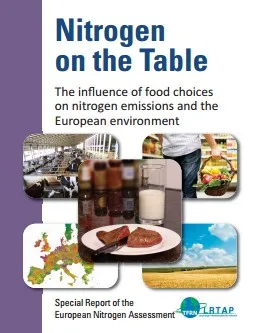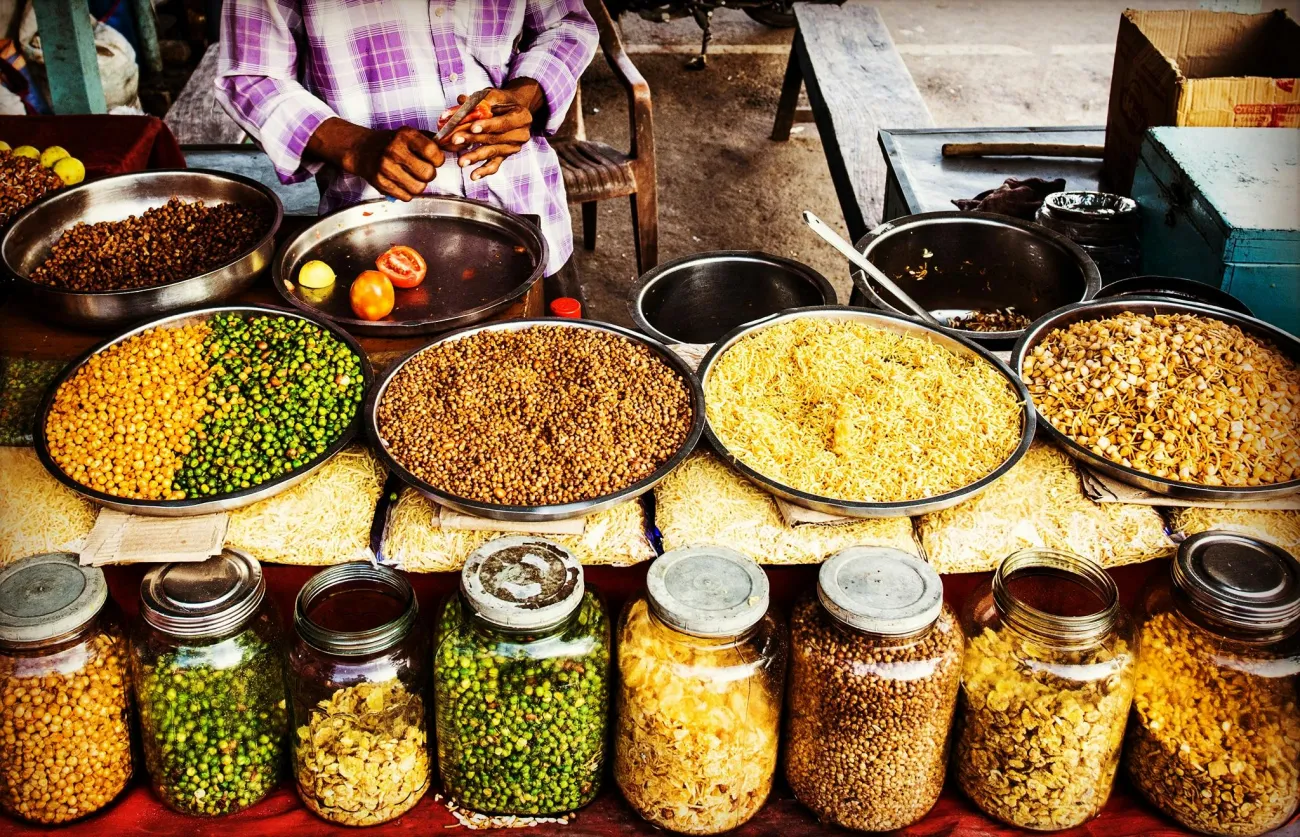This report quantifies the losses of reactive nitrogen from EU agriculture and food systems by food type, and assesses the impact of alternative diets (especially reduced meat) on the environment (through nitrogen emissions, greenhouse gas emissions and land use) and human health. Reactive nitrogen losses associated with agriculture refer mainly to the release of ammonia and nitrous oxide into the air, and nitrates into the ground. Nitrous oxide is a powerful greenhouse gas, and nitrate excesses in soil can lead to water pollution.

Using life cycle assessment -based modeling methods, the authors quantified the nitrogen losses associated with twelve food groups: six plant-based foods and six animal-based foods. They also developed six scenarios for alternative diets with reduced animal products and compared the implications of these diets for the environment and human health, compared to current average EU diets.
The key findings of the report were:
- Agriculture generates approximately 80% of all reactive nitrogen emissions in the EU, with production chains for animal-sourced food accountable for more than 80% of EU agricultural nitrogen emissions.
- Plant-based foods are associated with significantly lower nitrogen losses per unit of protein produced than animal-sourced foods, and shifts to more plant-based diets could significantly reduce the nitrogen footprint of EU citizens.
- Reducing livestock product consumption and production by 50% could lead to a 37%-42% decrease in EU agricultural reactive nitrogen emissions, and could reduce the requirement for imported soybeans (to use as animal feed) by 75%.
- Such dietary shifts would bring diets more in-line with international dietary recommendations and could lead to global benefits for human health, the environment and climate change.
The structure of the report is as follows:
Chapter 1 – Introduction
Chapter 2 focuses on current nitrogen emissions from agriculture and addresses the following questions:
- What are the emissions of reactive nitrogen related to the EU agricultural sector as a whole?
- What are the emissions of reactive nitrogen per EU agricultural subsector?
- What are the emissions of reactive nitrogen per unit of produce for the most important food commodities?
Chapter 3 explores the historic and current composition of European diets, with a focus on animal protein and assesses current diets in the light of dietary recommendations.
Chapters 4 and 5 explore the consequences of a hypothetical shift in European diets, by assessing diets with a 25 to 50% lower consumption of animal products. By using biophysical models and methods, the effects on nitrogen emissions, greenhouse gas emissions as well as land use are evaluated. Chapter 4 focuses on the dietary aspects; Chapter 5 on the environmental outcomes.
Finally, Chapter 6 places the results of Chapters 2 to 5 in a broader context, discussing the potential economic consequences and the question of how these dietary shifts could be brought about.
Citation:
Westhoek H., Lesschen J.P., Leip A., Rood T., Wagner S., De Marco A., Murphy-Bokern D., Pallière C., Howard C.M., Oenema O. & Sutton M.A. (2015) Nitrogen on the Table: The influence of food choices on nitrogen emissions and the European environment. (European Nitrogen Assessment Special Report on Nitrogen and Food.) Centre for Ecology & Hydrology, Edinburgh, UK.’
Read the full report here.
You can find related resources in the research Library categories on life cycle analysis, consumption and diets, animal issues, agricultural and aquatic systems, the region of Europe and keyword categories nitrogen, dietary trends, dietary guidelines.




Comments (0)